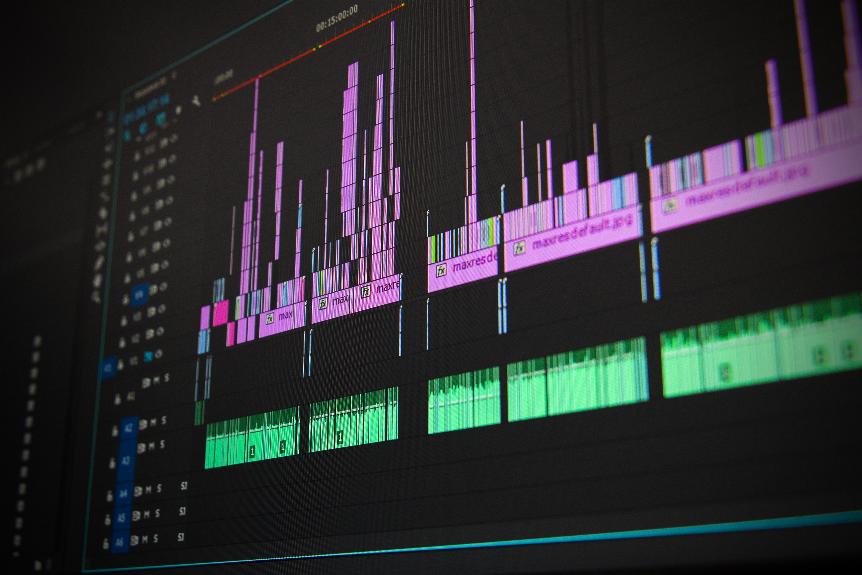No products in the cart.

Discover how you can unleash the power of revolutionary music production tech to transport yourself back to the 1980s.
From cutting-edge synthesizers to game-changing drum machines, this article delves into the world of retro vibes.
Explore the rise of digital recording and the convenience of home studios.
Learn how MIDI became the language of musical communication, and how sampling revolutionized sound creation.
Get ready to embark on a journey of nostalgia and creativity.
Get ready to explore the iconic sound of the 80s with synthesizers – the backbone of the era's revolutionary music production.
Synthesizers played a pivotal role in shaping the distinct and memorable sound of the 80s, characterized by its analog nostalgia and unique sonic palette. These electronic instruments revolutionized the music industry by allowing musicians to create sounds that were previously unimaginable.
The iconic sound of the 80s was defined by the synthesizers' ability to produce rich and textured tones, from pulsating bass lines to soaring lead melodies. With their versatility and endless possibilities, synthesizers became the go-to instrument for artists across various genres, from pop and rock to new wave and electronic music.
They became the driving force behind the sound of the 80s, leaving an indelible mark on music history.
Now let's delve into how drum machines revolutionized the rhythm of the 80s, giving musicians the ability to create dynamic beats and groove like never before. Drum machines became the driving force behind the electronic beats that defined the era, blending analog nostalgia with cutting-edge technology.
Here's how drum machines transformed the music landscape:
With the advent of digital recording technology, you can take your music production to the next level by setting up a home studio. This has led to the rise of DIY musicians who can now create professional-quality recordings from the comfort of their own homes.
The impact on professional recording studios has been significant. In the past, these studios were the only option for musicians looking to record their music with high-quality equipment and experienced engineers. However, with the accessibility and affordability of digital recording technology, many musicians are now opting to set up their own home studios.
This has prompted professional recording studios to adapt and offer unique services and experiences that can't be replicated in a home studio environment.
As you delve deeper into the realm of music production, you'll find that MIDI becomes the essential language for communicating musical ideas and instructions.
MIDI, which stands for Musical Instrument Digital Interface, is a protocol that allows electronic musical instruments, computers, and other devices to communicate and synchronize with each other.
MIDI interfaces, such as USB MIDI controllers, provide the physical connection between your computer or music software and your MIDI-equipped instruments. These interfaces allow you to control and manipulate the sounds produced by your instruments, giving you the ability to create complex compositions and arrangements.
With the help of MIDI, music software can interpret and translate your musical instructions into digital data, enabling you to record, edit, and play back your compositions with precision and flexibility.
MIDI has revolutionized the way we create and produce music, making it an indispensable tool for musicians and producers alike.
To create new soundscapes in your music production, explore the revolutionary technique of sampling.
Sampling involves the electronic manipulation of pre-existing sounds, allowing you to incorporate familiar elements into your compositions while adding a fresh twist.
By taking snippets of audio from various sources, such as recordings, movies, or even everyday sounds, you can manipulate and rearrange them to create unique sonic landscapes.
Sampling opens up a world of possibilities for experimental composition, allowing you to blend different genres, eras, and styles seamlessly.
Through careful selection and manipulation of samples, you can create layers of textures, rhythms, and melodies that breathe new life into your music.
Some popular synthesizer models used in the 1980s were the Yamaha DX7, Roland Juno-106, and Korg M1. These iconic 80s synths revolutionized music production with their unique sound capabilities and versatile features.
Drum machines revolutionized music production techniques in the 1980s. With their precise rhythms and customizable sounds, they allowed artists to create intricate beats and experiment with new genres, unleashing a wave of creativity and innovation.
In the 1980s, advancements in digital recording technology revolutionized music production. The impact was significant, as artists were able to achieve higher quality sound, experiment with new techniques, and create unique and iconic sounds that defined the era.
MIDI revolutionized how musicians communicated with their instruments. It allowed for seamless integration of electronic instruments, opening up new possibilities in music production. In live performances, MIDI enabled precise control and synchronization of multiple instruments, creating a dynamic and immersive experience.
In the 1980s, musicians like you used innovative sampling techniques to create unique soundscapes. You experimented with the integration of electronic and acoustic instruments, pushing the boundaries of music production and unleashing a revolution in sound.
